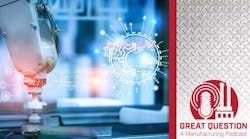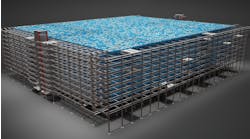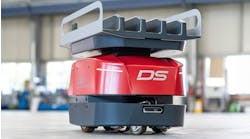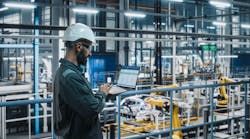By 2030, the U.S. could see 2.1 million manufacturing jobs go unfilled, according to a 2021 study led by Deloitte and The Manufacturing Institute. This shortage is already proving costly: 45% of manufacturers have had to decline business opportunities due to the lack of skilled labor.
Long-standing issues have now brought this skills gap into sharp focus. The talent shortage is fueled by two significant trends: an aging workforce heading into retirement and a technological landscape that evolves by the minute.
In the next decade, as much as 25% of all manufacturing workers are anticipated to retire, taking with them essential laborers on the shop floor and a wealth of knowledge and technical, and creating a critical vacuum of talent. Manufacturers must not only recruit workers who can bridge this skills gap but also actively facilitate knowledge transfer from seasoned professionals to ensure both continuity and quality.
Concurrently, the shift toward Industry 5.0 is reshaping the skill sets required on the manufacturing floor. In the modern plant, collaboration between smart machines and human expertise is becoming the norm. Workers are expected to have technical skills and experience with advanced digital technologies, but many lack the necessary training.
Artificial intelligence (AI) is poised to play a crucial role in overcoming these gaps. It could act as a bridge between current skills and future needs, preserving the deep knowledge of veteran workers and amplifying it through advanced analytics and machine learning. This lets manufacturers not only maintain but significantly boost their operational efficiency.
By integrating AI, factories can transform their workflows, making processes smarter and more adaptive to future challenges.
Training the Workers of Tomorrow
By embedding into the daily workflow, AI programs can make training continuous and closely integrated with the tasks at hand. In this context, AI digital assistants could act as on-demand tutors. They could provide specialized manufacturing knowledge and instructions directly to frontline workers in real-time, so they can easily understand data and apply it instantly to complex tasks.
For instance, Bayer CropScience's AI tool, Smart Search, quickly searches an extensive database to find and deliver the exact information workers need. It stores and analyzes records of past incidents, user-generated content like shift logs, and operational guidelines accumulated over a decade. Employees can use this valuable tacit knowledge and best practices developed over the years by experienced operators, technicians, and engineers to troubleshoot faster and perform their jobs more effectively.
Simplifying Complex Data Analysis
In manufacturing plants, teams frequently grapple with vast amounts of data generated from preventive maintenance strategies and condition monitoring devices, software, and sensors. This torrent of information requires rapid and proficient analysis, a task that becomes daunting due to the fact that many teams lack the expertise to swiftly interpret complex datasets.
Here too, AI technology steps in to overcome the skills gap. It interprets and analyzes large volumes of data so that less experienced workers do not have to. These applications share the actionable insights employees need to get on with the job.
Take handheld vibration testers as an example. User-friendly interfaces guide technicians through the data collection process. Once the data is recorded, AI-powered software can analyze the information and alert them to irregularities in assets that need to be addressed immediately before they escalate. As factories transition from handheld to installed, wireless vibration sensors, AI-powered software becomes even more essential in analysing vast amounts of data at scale. This is prescriptive maintenance in action, where solutions not only predict failures but prescribe fixes
Powering Predictive Maintenance
Traditionally, predictive maintenance — and the critical analysis of machine data that supports it — has been a resource-intensive process. This often involved collecting data with sensors as a machine ran in order to monitor individual component health and track failures.
Experts would then painstakingly analyze this data, looking for patterns and anomalies that indicate wear or potential failure. Even after setting up such systems, continuous monitoring and data analysis requires significant manual effort and expert intervention.
However, by leveraging machine learning, generative AI can automate the detection of patterns and anomalies, predicting equipment failures before they happen. This reduces the need for manual monitoring and the reliance on specialized personnel for daily operations.
Manufacturers at the forefront of the industry already know that this automation not only streamlines the maintenance process but also extends machine life and reduces operational costs. But, importantly, it also democratizes the use of predictive maintenance by enabling new maintenance workers to confidently work with and maintain complex machinery. This capability is crucial, as it allows a broader segment of the workforce to engage in sophisticated maintenance tasks without the need for extensive training in data analysis.
Embracing AI: A New Era for Manufacturing
The true power of AI in addressing the manufacturing skills gap lies in its ability to expand human potential, not replace it. And by redefining roles within the industry, AI will not only create more dynamic and skilled positions but also improve interactions between teams and technology.
The factories of the future will be powered by intelligent systems that are proactive, efficient, and inclusive, making the most of every level of talent available. So, the race is on for manufacturers to acknowledge the skill constraints and identify how new technology can help, lest they get outpaced by their competition.










